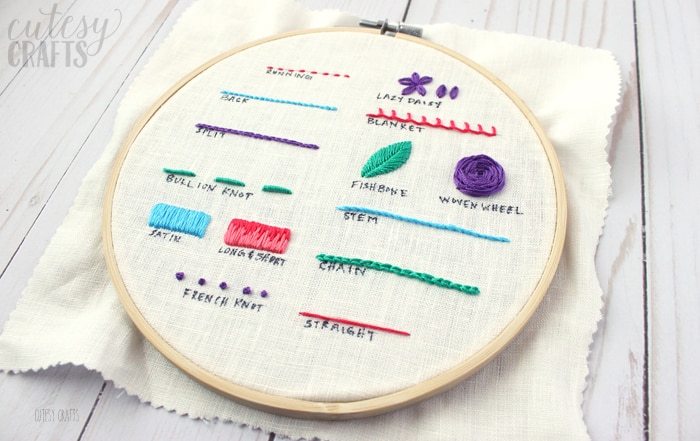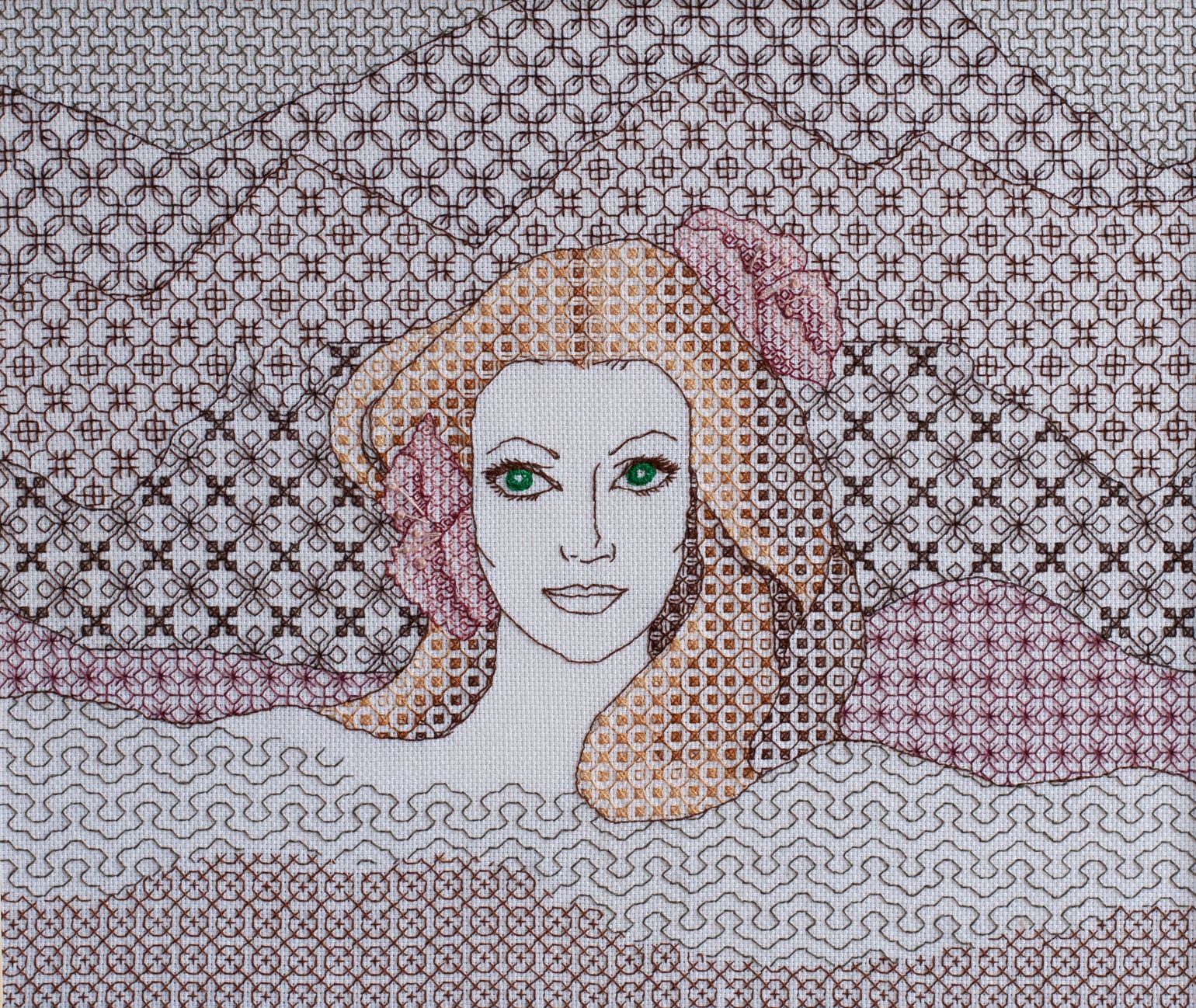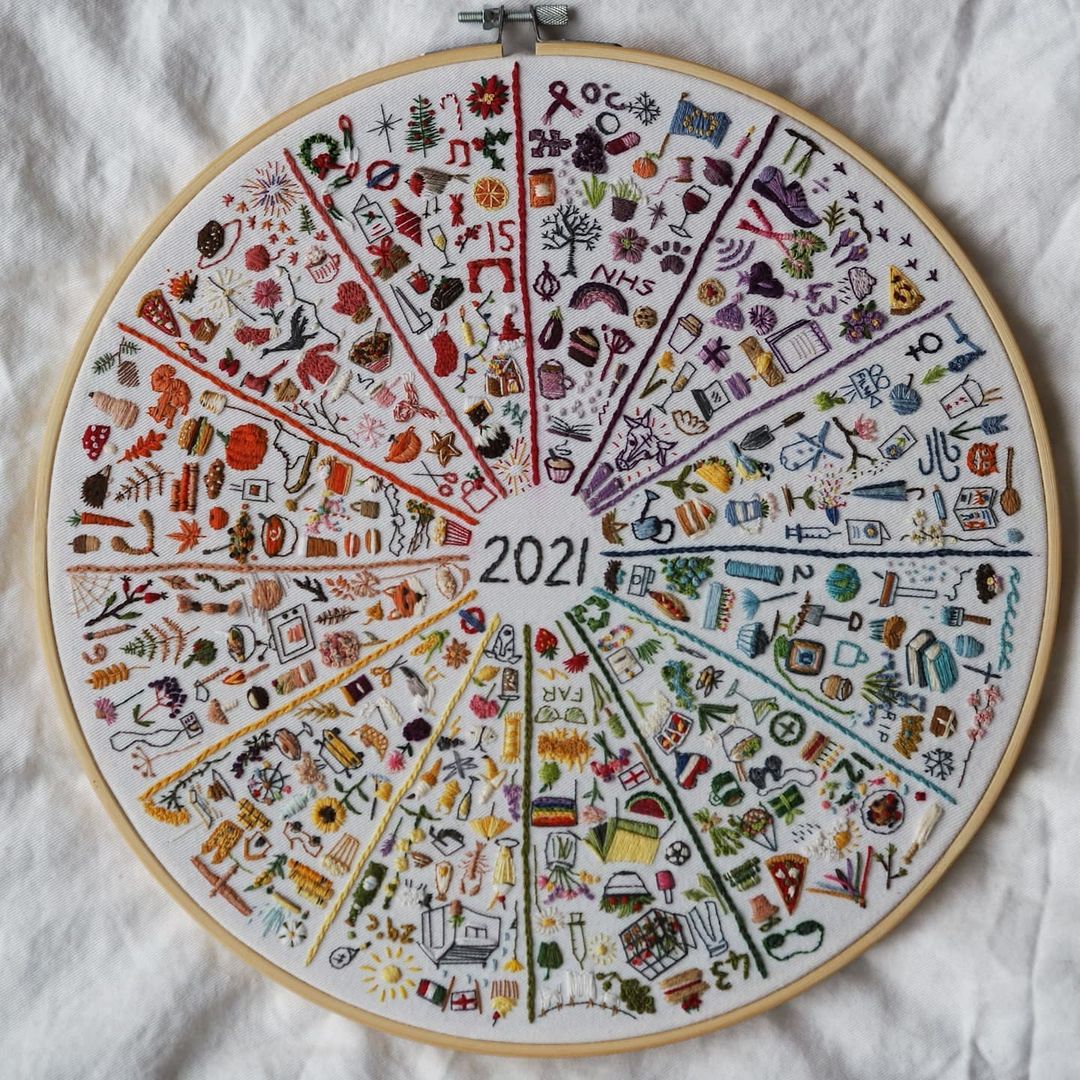Individual Correspondence Courses
In-Depth Embroidery Study
Individual Correspondence Courses offer EGA members intense, personalized study under the supervision of teachers selected for their outstanding needlework skills and knowledge. The courses are in-depth study programs dealing with a wide range of embroidery techniques and disciplines at various skill levels. They are a perfect complement to workshop classes, group study courses, and lectures. ICC’s are often used as a jumping board for our Master Craftsman programs, or our Teaching and Judging Certification programs. Below you will see some Frequently Asked Questions followed by a list of available ICCs.
-
Frequently Asked Questions
Before you register
What are Individual Correspondence Courses?
Individual Correspondence Courses (ICCs) are designed to provide an opportunity and access to a deeper dive into a technique, with shepherding and mentoring from a teacher. They are designed to help experienced stitchers level up in acquiring skill and depth of understanding.Who are ICCs for?
• Advanced beginner to Intermediate stitchers looking to level up in a specific technique
• Experienced Stitchers looking to learn a new technique
• Self-motivated and curious learners
• Stitchers working for certification in our Master Craftsman programs, or in our Teaching and Judging Certification programs.
• Members-at-large (MAL) who do not have ready access to participate through a local chapter.
• Stitchers who would like to work one on one with a specific teacher, by using the ICC.
• Stitchers who just want the text and do not intend to complete the course.How many lessons does each ICC have?
Depending upon the ICC course, some are 3 lesson, 6 lesson, and 9 lesson courses, offering different levels of skill mastery.Is there a difference in skill level depending on the number of lessons?
The 6 and 9 lesson courses are considered “Intermediate-Advanced Level” and can be quite challenging and have been so marked. New courses are being shifted to include more beginner level information as we’ve begun to fill the need for a more comprehensive instruction in various techniques.Is there a set schedule for the ICC?
Yes. The general understanding is that you have two months per lesson to complete an ICC and allow for the mailing between student and teacher. That being said, most of the teachers (if not all of them) are very understanding about life circumstances and can and will offer a short extension to accommodate delays. If it goes beyond a certain time frame, you may be asked to re-enroll and pay a new registration fee if you would like to continue working with the teacher.How long are ICCs available for?
ICC’s are available for registration from the time they are launched until such time as the teacher retires the course. Many of our ICC’s have been offered for several years, which offers the student flexibility to sign up when time and life allows.Can I just buy the text and skip the class?
The course textbook is not included in the course fee. However, you must purchase the entire course in order to acquire the textbook. While we’d love for you to go through this journey with your teacher’s guidance, you are always welcome purchase the course and skip the work portion of the class. Just let the teacher know.How will the teacher and I communicate during the ICC?
The student and teacher correspond through email and mail at the conclusion of each lesson, and before the start of the next lesson.What are the student responsibilities and the policies on time extension?
Click here to Read the Student Responsibilities and Time Extension PoliciesAre Individual Correspondence Courses refundable?
Refunds for Individual Correspondence Course or text fees are not available, so make your selections carefully.Where can I download the Pilot Stitcher Application?
Click here to get the Pilot Stitcher ApplicationWho can I contact if I have more questions about Individual Correspondence Courses?
You can contact our ICC Chair using the form on our Contact Us page and choosing Education: ICC as the topic.After you register
When does the course start?
The timeline for course completion begins when you register.How long do I have to finish the class?
The “hard” deadline is 6 months for a 3-Lesson course, 12 months for a 6-Lesson course, and 18 months for a 9-Lesson course. An extension may be requested.Will I be required to send my finished work to the teacher?
Yes and no. If you submit a lesson to the teacher for review, they will provide an assessment and then mail the work back. It’s a nice opportunity to work one on one with a teacher that you might have heard about, but not had access to learning from in the past.If you prefer not to submit work, a teacher will check in with you to see if you are still interested, but otherwise, you may sign out of the class and keep your text.
How do I get the text for the class?
If you ordered the PDF version you can download it from your Order History, on the left sidebar of your Profile. If you ordered the Hard Copy version you will be receiving it in the mail from your teacher.Where can I see the thread colors for ICC Pin?
The list of thread colors is available here. -
EGA Skill Level Definitions
Basic: No experience with the technique being taught is necessary.
Intermediate: Knowledge of basic stitches, materials, and their use in the technique being taught is required.
Advanced: Ability to execute simple and difficult stitches in the technique is required. The student should also have knowledge of color and design that will allow exploration and creativity.
All levels: Class is suitable for all levels.
Are you ready to level up your skills? Here’s how ICCs work
Step 1: You select and register for your preferred course.
Step 2: We process your registration and notify your teacher
Step 3: Your teacher will start communicating with you and will send you your welcome letter the class text if you ordered a hard copy of the text. If you chose the PDF version of your text, you can download it from your Order History as soon as you register.
Step 4: It’s time to gather your materials and start reading and working your way through the exercises!
Step 5: You will have two months per lesson to complete your work. After each lesson you will mail your finished exercise to the teacher.
Step 6: Receive your lesson evaluation from your teacher and start working on your next lesson!
Step 7: Celebrate your completion of your ICC with a notice in NeedleArts Magazine! Send your class evaluation and start looking through EGA Certifications or your next stitching adventure!
NOTE: Please read the Student Responsibilities before enrolling.
Choose your ICC
-
A Basic Study of Schwalm Embroidery with Barbara M. Kershaw
Taught by Barbara M. Kershaw (view bio)Barbara M. Kershaw has a passion for learning and sharing her knowledge of the many varied and wonderful forms of embroidery generally called whitework. She has taken many courses and classes from the EAC, EGA, and ANG. Barbara is certified as an EGA Master Craftsman in counted thread. She also studied in Germany at the Museum de Schwalm in 2005 and 2011. She has been teaching for over 20 years at various EAC national seminars, EGA national and regional seminars, guilds in Canada, America and Bermuda as well as two International teaching tours of the USA. Barbara is the author of EGA Group Correspondence Courses – Noel and Individual Correspondence Course Basic Study of Schwalm Embroidery. Her book Exquisite Schwalm focuses on Schwalm filling stitches.
ICC, Surface Embroidery
A Basic Study of Schwalm Embroidery introduces the student to the beautiful style of whitework from Germany known as Schwalm Embroidery.
-
Crazy Quilting with J. Marsha Michler
Taught by J. Marsha Michler (view bio)J. Marsha Michler is a nonfiction author of 13 printed books, and 8 self-published eBooks on the topics of crazy quilting, embroidery, silk ribbon embroidery, wire jewelry, and knitting. Her quilts have won awards at quilting shows, and her work has been featured in national magazines and other publications including our Needle Arts magazine. Holding a degree in Business Marketing, and three-quarters of a degree in fine arts, summa cum laude and dean’s list, she has taught classes on crazy quilting, embroidery, and wire jewelry. She actively pursues crazy quilting, embroidery, fiber spinning, knitting, fiction and poetry writing, ballroom dancing, stone wall building, and resides with her husband and dog in the beautiful and inspiring foothills of Southern Maine.
ICC, Quilting
Learn new skills in Victorian Crazy Quilting in this comprehensive Individual Correspondence Course that will bring you to a mastery level of this much-loved art and craft.
-
Design for Needlework with India Hayford
Taught by India Hayford (view bio)India specializes in contemporary and ethnic surface embroidery techniques including Yemenite Jewish and Yemenite Israeli embroidery, clothing embellishment, and fabric collage. She also teaches courses on embroidery design, Middle Eastern costume construction and embellishment, and nontraditional needlepoint and blackwork. Her articles on these subjects have appeared in Threads and Needle Arts magazines. An EGA Certified Teacher, India is the recipient of two EGA Legacy Scholarships and one Research Fellowship Grant. In 2017, she presented a lecture on “Embroidery, Clothing, and Feminine Identity in Jewish Yemen” at the Casper College Humanities Festival and Demorest Lecture.
ICC, Design
Our Individual Correspondence Course Design for Needlework with India Hayford is for the technically adept embroiderer who wishes to create unique embroideries.
-
Exploring Jacobean Crewel Embroidery with Carol Peao Currier
Taught by Carol Peao Currier (view bio)Carol Currier is certified by the National Academy of Needlearts (NAN) as a surface embroidery teacher. She served on the national board of The Embroiderers’ Guild of America (EGA) for eight years including as national President from 2007-2009. Carol is currently the EGA Chair of the Master Craftsman program in crewel embroidery. She was honored in the September 2018 Needle Arts as Designer Across America. Carol holds memberships in EGA, NAN, American Needlepoint Guild (ANG), and National Association of Needlework Teachers (NETA). She is a partner in a needlework shop in Pinehurst, North Carolina.
ICC
Jacobean Embroidery is a form of English crewel embroidery on linen from the early 17th century. The student will research the history of the period including the origin of typical design motifs and colors used in household furnishings. The student will then translate their research into a stitched design of their own choosing. The student also has the option to stitch the provided design.
-
Rainbows Bend: A Course on Color Theory with Carole Rinard
Taught by Carole Rinard (view bio)Carole Rinard has studied color since she was in high school and has incorporated color theory in the clothing and textile classes she taught at the university level. She is an EGA Master Needlework Judge and a Color Master Craftsman. She has been active in all levels of EGA and has served on the national board. Since 1989, she has volunteered at the Santa Fe Opera costume shop where she has heard numerous designers and directors discuss color in costumes, sets, and lighting. She lives in Los Alamos, New Mexico with her husband.
ICC, Color Theory
From color wheels to how to use color in your own work, our Individual Correspondence Course, Rainbows Bend: A Course on Color Theory is a comprehensive study of color.
-
Techniques for Canvas Embroidery with Diane Herrmann
Taught by Diane Herrmann (view bio)Diane Herrmann won EGA’s Gold Thread Award in 2015 and has taught within EGA, ANG and the Windy City Chapter of EGA both regionally and nationally. She has affiliations with EGA, ANG, NAN and NETA. Diane has several publications and presentations over the years to include “Diaper Pattern and Needlepoint” in Crafting by Concepts. Accomplishments and awards have been granted to include the Jean Thomas Howard Scholarship as a teacher in 2009 as well as NAN Exemplary in 2009, 2012 and 2015, among several other recognitions. Diane teaches one of EGA’s latest Individual Correspondence Courses: Techniques for Canvas Embroidery.
ICC, Canvas
Our Techniques for Canvas Embroidery Individual Correspondence Course is an in-depth study of the various techniques used in canvas embroidery.
-
The Sampler Family Tree with Carolyn Standing Webb
Taught by Carolyn Standing Webb (view bio)Carolyn Standing Webb has a degree in education but finds needlework much more rewarding to teach. She grew up in a home where art was a part of everyday life and creativity was encouraged. An EGA member of our Wasatch, Salt Lake City Chapter, she has been a needlework designer and teacher for over twenty years, teaching on the local, regional and national levels. She has a line of patterns available in retail stores. Several pieces of her work have been published in books and magazines and she has won a number of prizes for her needlework. She has her Master Craftsman in Counted Thread. Her goal is to share with her students her love of needlework and to help them relax and enjoy it.
ICC
Samplers are one of the most recognizable of the forms of historical embroidery. This Individual Correspondence Course with teacher Carolyn Standing Webb will help you to explore the history that is the family tree of samplers with all of the different branches.





